Photo
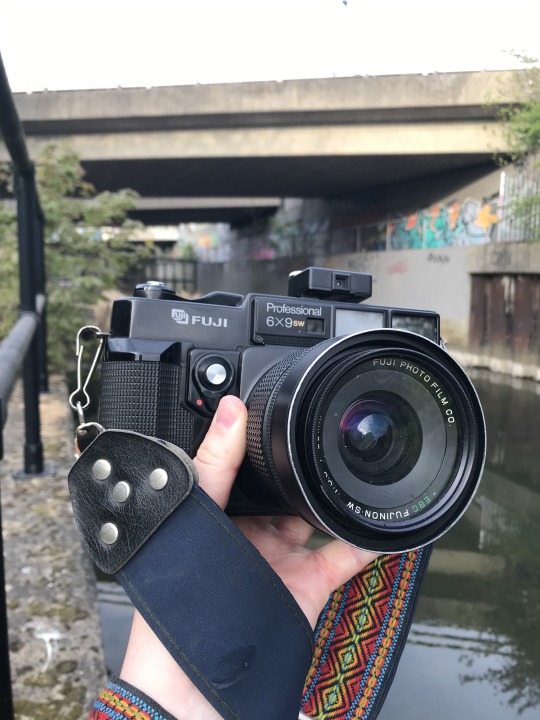
The monster Fuji GW690ii (AKA the Texas Leica) is a fixed lens, rangefinder medium format camera. It’s nickname as the ‘Texas Leica’ comes from it’s rangefinder format and at how sharp the results are and it’s larger than life appearance.
I purchased this camera after succumbing to a severe case of G.A.S (gear acquisition syndrome), the curiosity type, rather than just wanting new gear. I prefer using rangefinders as a tool after falling in love with the process through my M-mount Bessa R2m, and I wanted to experiment more with medium format cameras, after my experience with the RB67. The Fuji offered more portability and in the body of a rangefinder, and after reading numerous reviews around the quality of the lens/camera, as soon as one came up from a respectable seller in the UK, I had to try it out.
First impressions were that the build quality was solid, but by no means luxurious, with plastic grip where a leatherette and plastic finishing across the body. You can tell this was a designed as a simple workhorse of a camera, with maybe the more artisan materials being left off to keep the weight down and portability up. Every button is pronounced and easy to use, with the camera taking the shape of a cartoonish toy camera silhouette and this did make me feel a bit self conscious using it. Some other issues I had with it, was I wasn’t a fan of moving the lens hood to change the aperture and because if this constant moving the lens hood is prone to becoming misshaped. Although, the viewfinder is optically beautiful, large and light, the rangefinder patch was very faint and made it difficult to focus on 1/3 shots. This may have just been this particular camera, though.
Despite those first impression issues, the plus points of this camera do override them. The first and main one is the powerhouse of the lens. It is incredibly crisp and it is clear how the camera earned it’s nickname. It’s portability and simplicity is also a massive plus. Unlike touring with the RB67 which was holstered in my rucksack, I could keep the fuji around my neck with a secondary 35mm camera round my neck too. It made medium format photography much more accessible for this reason. The simplicity of the camera meant I could spend more time thinking about photos I wanted to take, rather than preparing the camera to take the photo. Whilst using the camera I also really appreciated how it felt to use it. When you wound the film, you felt the gears turning. It felt mechanical, it felt like it was working for you and these feelings added to the photo taking process.
I did however, end up selling the Fuji, partly for the reasons I mentioned, but also I preferred using the RB67. The act of taking a photograph with the RB67 made it like an event, which with the expense of medium format photography was important. Also I was also much more convinced about the quality and feeling of the photos the RB67 created. Also (which is not the Fuji’s fault), is after repairing the RB67 myself and carrying it all over the place, I deffo have developed an attachment to it, which the Fuji just couldn’t touch. Lastly, it is such a brilliant camera, it needed to be used and deserved more than to sit on my shelf for a once a month trip.
2 notes
·
View notes
Photo

Pub break after a walk around the countryside, summer 2020. Also a break to compare the size difference between the Olympus Pen half frame and the Fujifilm GW690ii Medium format rangefinder.
0 notes
Photo

First time trying out a coloured lens whilst shooting in B/W. Yellow, orange and red can up the contrast of images. Trying to remember why... it’s something about the red colour in the light either being amplified or reduced, changing the contrast of the image.
Main thoughts are: I need to practice more with filters, adjust the exposure depending on the filter. Even though the exposure meter works through the lens on the voigtlander, the image still came out underexposed. And it makes the camera look 🔥
0 notes
Photo


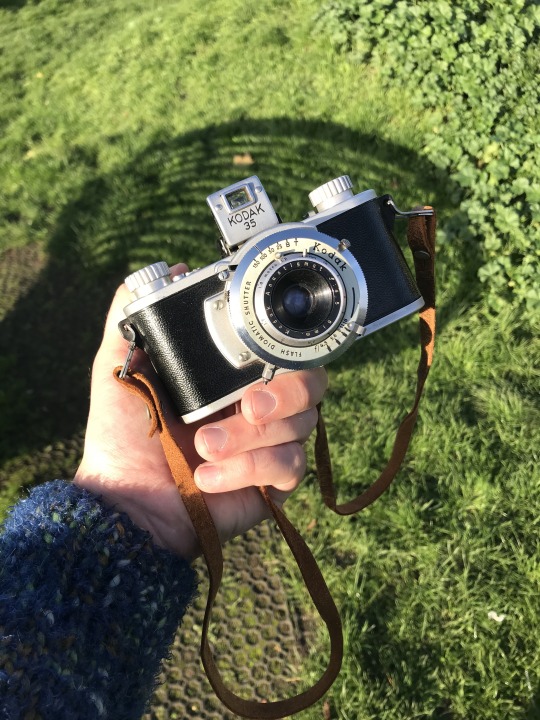

This is the Kodak 35. Since seeing the military version of this camera produced for the second world war between 1942-45 (civil production of this camera was ceased during this time), I wanted to try and get my hands on the civilian version as a way to experience the same view/image creation as someone in the field during WW2. The camera was introduced in 1938 and after 1945 civil production did continue until 1949. There were a number of different shutter/lens combinations and it seems this model was produced either in 1946-47. It is fairly simple to use, but using a camera of this age does come with the lack of ergonomic design or helpful features. It is built like a tank, and is a fair weight when handling it. One major problem I found was rewinding the film shredded my hands as it was so stiff. Maybe if this camera had a CLA or service this would be smoother.
I’m also a big fan for the aesthetics of this camera. It is compact with the lens taking the centre place of the design. The symmetry of the film advance and rewind knobs are also quite pleasing. I am a big fan of the viewfinder, which added as another centre point to the symmetrical design and the typeface used just looks cool imo. Something else that struck me about this camera is the care of how it was made. This was a fairly cheap camera and is only worth about £15 today, but the care and attention of the engraved labels and even the ‘made in the USA’ label is engraved and attached as a separate piece of metal. Like a lot of people, the craftsmanship and build quality in analogue cameras is what has drawn me to camera collecting and using analogue cameras as a daily tool. With automated production and high production volumes, getting this level of care and precision has almost vanished from the modern camera market and you have to pay BIG money for the likes of a new Leica MP if you want to experience it now.
2 notes
·
View notes
Photo

Olympus Pen FT, in my opinion one of the best looking cameras I’ve seen. It was also my first go at using a half frame camera. I bulk load most of my film to cut expense down, but do go one step further and make those rolls last twice as long was too good economically to ignore. Being a half frame camera this means it fits two images on a single slide of standard 35mm, with the viewfinder positioned in a portrait orientation. Thus, making a 36 exp roll of film last for 72 images. This is a huge bonus as it meant I could pick this camera up when leaving the house and rely on it having shots left in it and I was, of course, using less film. However, it does take so long to use up a roll of film if this camera is not your main companion. I use cameras on regular rotation, so it took nearly 8 months to shoot 4 rolls of film using this camera. As I develop film in batches of 4 it did make me lose some connection to the images I took, but also added to the anticipation of which images would come out on the roll. It was also another way of shooting. So switching between this and an RB67 then to an Xpan really fcks with how you start to think about your shot. Which is a fun way to push new ways of shooting. Also the juxtapositioning of images in this dual format is also quite pleasing. If you care enough, I’m sure you could make it so there’s a correlation between shots, but I approached it with a more happy go lucky technique, as I do with all film photography.
Along with the iconic and beautiful design of this camera, the build quality is also excellent. Despite being a very compact size and very portable nature, this camera is built like a brick. (Apart from the flimsy af self timer lever. With every other element of this camera being so sturdy and well built, I have. no idea why. this part is such an anomaly. It may just be my camera, but I have heard other users experience the self timer breaking the mechanics of the shutter altogether.
Another issue, which is more of a small gripe than a deal breaker, is I need to wind the film lever fully and then once again just a touch to reset the shutter properly. I’m also using a double stroke Leica M3 at the moment so it was a similar action, and without a shutter lock, maybe a blessing ins disguise? Either way, this issue is common with the Pen FT, but I haven’t missed a shot because of it, so almost not worth mentioning.
The images produced surprised me with their sharpness with the lens I was using with was the 1.8, 38mm, which may be the equivalent to 50mm in a full frame camera, I may also be talking b/s. The lens was wonderfully sharp and created some pleasant bokeh and seemed to handle a number of lighting situations. Although, I was using a mixture of sunny 16 and a phone metre, as initially I didn’t have the correct batteries until I found a supplier of Wein batteries. Also the metering is strange. The meter measures from numbers 1-8 and corresponds to numbers on the aperture ring of the lens, that. are actually separate to the aperture values themselves. I assume this was to make metering easier for a consumer market, but when you’re using a lens without these numbers (which I was to begin with) the meter is pretty much useless. I have since tried it with. a lens with these numbers on, but am yet to process the results.
Conclusion, an absolutely stunning camera, with excellent build quality. Some small issues and annoying quirks, but these are made null and void with the results and amount you can get out of one roll of film.
#olympus#olmypuspen#olympuspenft#camera#film photography#filmcamera#35mm camera#35mm photography#35mm#analogue photography#analogue camera#camera review
1 note
·
View note
Photo
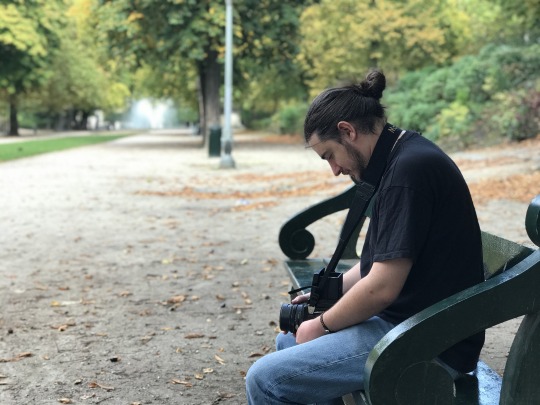
Photo of me using the Mamiya RB67 (repaired in the nick of time) in Brussels park. Carried this monster of a camera around two cities and only took 20 photos. I deffo felt it at the end, but so good to have this camera as a companion, when walking around special or new places.
Using this camera makes every photo you take an event. The process of preparing the camera to shoot, through to composing the image ending with the satisfying flop of the mirror shutting as you take a picture.
I have a soft spot for this camera after painstakingly learning how to refurbish it and everything is has taught me about using cameras and medium format film and the results are so detailed, with crisp and dreamy details combined making it look like I know what I’m doing!
0 notes
Photo
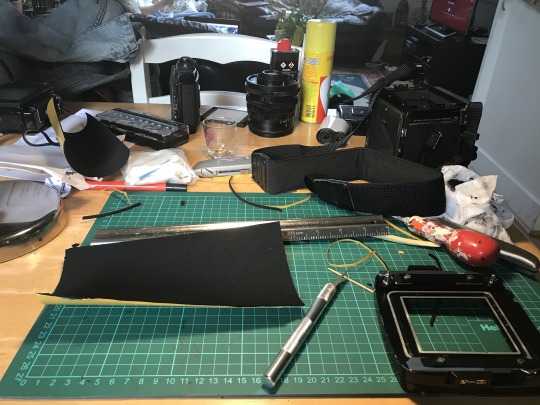
Frantically, learning how to and carrying out light seal replacement on the Mamiya RB67 on the day we left for Belgium. I picked this camera up for an absolute steal, but it needed some heavy TLC. Every light seal had perished to the point where it was marking the mirror and affecting other parts of the camera.
I was quoted £150+ to have this repaired, but doing it myself was not only a fraction of the price but also taught me so much about the camera. All together including buying a knife set, it came to around £20 and a couple of hours work.
I did underestimate just how many light seals this cameras has. As it splits into 3-4 different parts, each one needed individual care and foam cutting to specific lengths with different thicknesses throughout.
I’d want to support experts in repairs as they are few and far between, but I have a limited budget, so will always try and DIY if I can!
1 note
·
View note
Photo
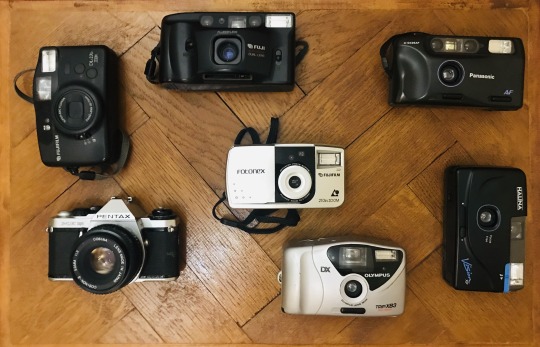
Last weekends carboot sale hoard. Best place to buy. Decent charity shop finds at good prices are becoming harder and harder to find. Best thing to remember is you can never go wrong with a quid.
Fujifilm DL-180 Tele: £3
Fujifilm DL-270: £1
Fujifilm 210ix Zoom: £1
Halina Vision XF: £1
Olympus Trip XB3: £1.50
Panasonic C-D426AF: £1
Pentax ME Super: £7
Total: £15.50
#cameras#filmcamera#film photography#35mm camera#35mm photography#35mm#analogue camera#fujifilm#pentax#olympus#halina#panasonic
2 notes
·
View notes
Photo
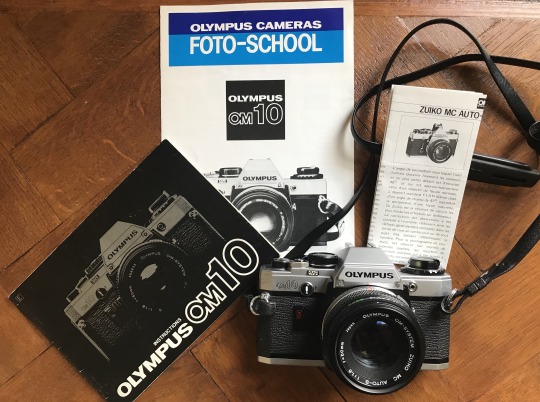
Latest addition to the collection, an Olympus OM10 with original manuals. I already own an Olympus OM10 which was handed down to me from my Dad. As I am quite precious over that one, owning this second OM10 will hopefully give me the opportunity to take it apart and see what’s what. There are a couple of issues with it, an unreliable shutter and significant fungus/hazing on the lens. Which is a shame, but for £20 and a short drive to another part of East London, it is absolutely worth it.
#olympus#olympusom10#filmcamera#analogue camera#35mm camera#camera#cameras#cameraporn#film photography#35mm photography#photography
1 note
·
View note
Photo


The very crude drawing representing the sunny 16 rule on the back of my Nikon F2. If you don’t have an exposure metre to hand either internal to the camera or an external one, this is a brilliant method which has consistent results. However, not recommended if you are a perfectionist or using slide film. Most B/W films are quite forgiving which helps! To use the sunny 16 rule, set your shutter speed to the ISO number of the film you’re using. Then depending on the weather adjust the aperture. If you can’t make out my drawings they’re listed below:
F16: Bright sunshine
F11: Sun with some cloud coverage
F8: Overcast
F5.6: Dark cloud coverage
F4: Dawn or Dusk (sun low in the sky)
F2.8: Sunrise/sunset
I combined using this method of exposure with my first experiment with double exposures, which removed all preciousness with the images as everything was left to chance. Part of me did think it was a miracle anything came out at all, but then at the same time why wouldn’t it? Trust the process and don’t worry about the end result. I always think if you get one good photo on a whole roll, you’re doing well.
#nikonf2#nikonf#nikonphotography#nikon#sunny16#camera#cameras#filmcamera#film photography#35mm photography#35mm camera#35mm#analogue camera
2 notes
·
View notes
Photo

My Voigtlander Bessa R2m with the Voigtlander Nokton 50mm 1:5 lens and viewfinder. I bought this camera when Voigtlander prices were on the up and when me and my partner had very little cash, so it was an investment (a controversial one). At the time it was between this and saving longer to afford a Leica M6, but with money being syphoned off for general life stuff, I had to go with the R2m. However, despite still lusting over an M6, I do not regret purchasing this camera at all, it has actually become my most used camera for nearly every situation. Pros and cons regurgitated from countless reviews I read and things like film back opens like a standard 35mm camera and with a film window you can always see which film is in there, which is helpful if your using a rotation of cameras. Build quality I read is not as good as the M6. BUT, don’t read this as I initially did. Yes the build quality is not as good as arguably the best film camera ever designed, but it is still excellent; solid with a tactile finish. The grip really elevated that feeling of the camera in your hands. It has has a nice balance of ruggedness a rangefinder like the Minolta CL has with some more subtle touches like the M6. Some may be critical of the Bessa, but like all reviews I’ve hated reading, the ultimate decision is go with what you’re happy with. In comparison to it’s non-leica competitors, this M mount rangefinder is by far my favourite and it will take a huge amount for me to part with it now.
#voigtlander#nokton#50mm#35mm photography#35mm camera#35mm#analogue camera#film photography#filmcamera#cameras#camera#photography
2 notes
·
View notes
Photo

Voigtlander Bessa R2m and a lovely pint of Cornish ale, down in Hayle. We had to miss our yearly Cornwall trip, but hopefully we can be back there in 2021.
#cornwall#voigtlander#camerasandbeer#ale#analogue camera#35mm camera#35mm photography#35mm#film photography#filmcamera#camera#cameras#photography
2 notes
·
View notes
Photo

A fisheye lens outside of an estate agent or event photography setting can feel like a novelty thing. Which, to be honest it is for me. So your options are to spend £50 on a lomography fisheye, which is fine, it gives you that skateboard film aesthetic, but the results aren’t great. Unfortunately, the only other option is a horrendously expensive fisheye lens. I lucked out and picked up this sigma fisheye lens which second hand goes for around £350, and I picked it up for £60. This price is because the aesthetic condition is UGLY. But the optics are perfect and I wanted to experiment with fisheye effects so went for it. It also fits my DSLR, which always makes the cost of a new lens less painful if it can be used across multiple cameras.
#fisheye#canoneos#canon#lens#camera#cameras#filmcamera#film photography#35mm camera#35mm#35mm photography#photography
2 notes
·
View notes
Photo
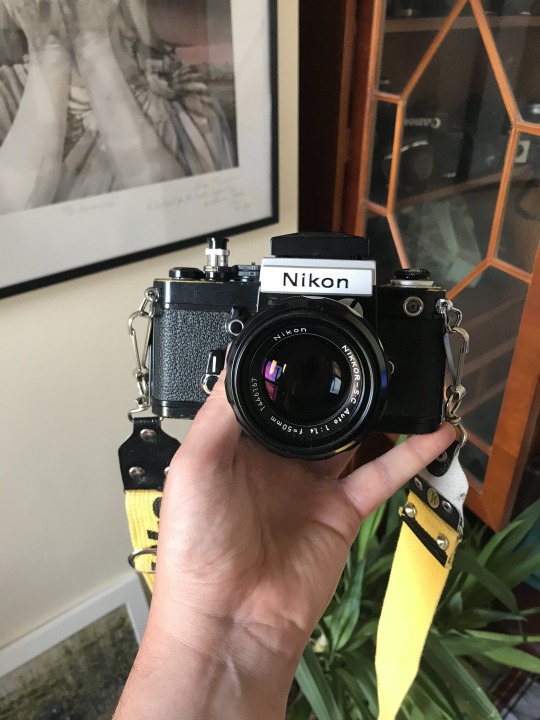

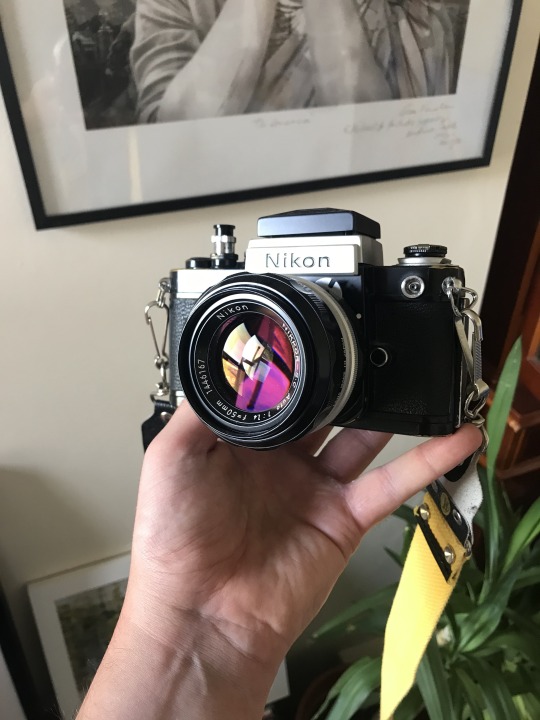
The legendary Nikon F2 was my first introduction to the renowned F series. This camera encapsulates everything image making through photography should be. It’s build quality is superb and it owns its fully mechanical capabilities, making the user feel like they are using a piece of specialist machinery rather than just a camera. But, it is as simple as any other camera, and things just work. Mine came to me in a sorry state, substantial brassing (which I love) and a broken DP-11 viewfinder. I wanted to take this camera back to the purest mechanical form I could, so now I only shoot with a DW-1 waist level viewfinder, and using the sunny 16 guide as my exposure metre. It adds to the feeling of experimentation and haphazardness, allowing you a freedom with your photo taking. Using the DW-1 finder, gave me my first feeling of medium format waist level viewfinder and despite the unsubtle form and shutter noise, shooting at waist level can be more discrete for street photography. Only thing I would say is, as it is such a beast and weighs a ton, I do not take it out anywhere near as much as I’d like. If you don’t have an F camera in your arsenal, the F2 is where I would start. (Or the F3 if you’re wanting a sweet autofocus function and an excellent exposure metre.)
#nikonf#nikonf2#nikon#nikonphotography#35mm camera#35mm photography#camera#cameras#slr#filmcamera#film photography#analogue camera
1 note
·
View note
Photo
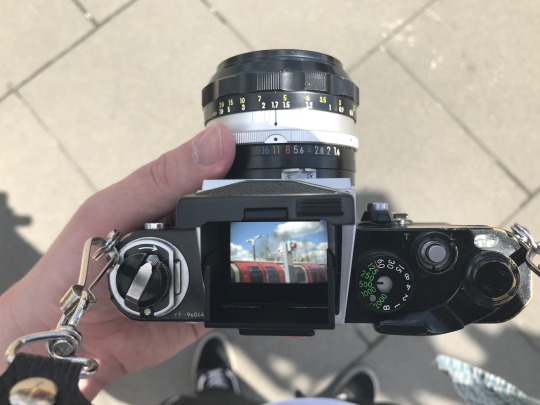
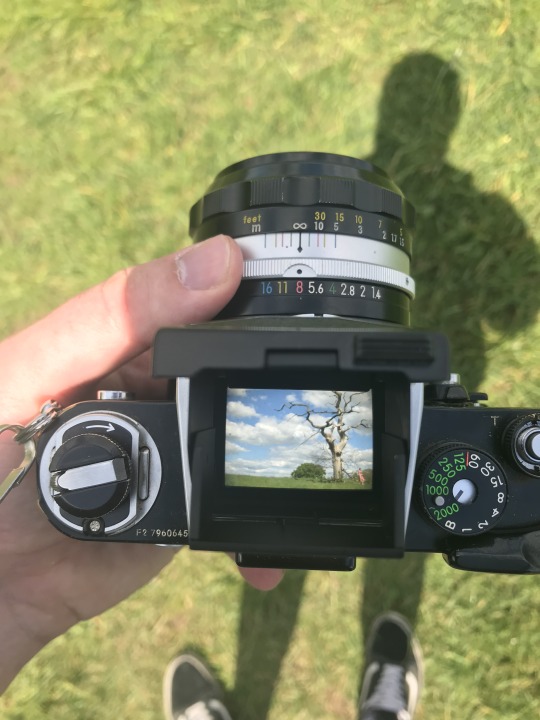

Nikon F2 with the DW1 waist level viewfinder
#nikonf2#nikonf#nikon#slr#wlvf#filmcamera#camera#cameras#film photography#35mm camera#35mm photography#35mm#analogue camera
0 notes
Photo

Canon EOS 300x paired with a 40mm 2.8 pancake lens, one of my favourite and cheapest kits. The camera body is compact, fully electronic and using it feels quite playful. It cuts through the seriousness or the preciousness that usually accompanies film photography. The lens is unique in its style and focal length coming in at 40mm. I found portraits, close ups and architectural photography have all suited this lens well. Altogether the camera body was bought from a proper camera shop not an ebay buy so came to a top dollar price of £30 and the lens is remarkably cheap (for a lens) at £90. If you’re a canon user this prime lens should always be in the kit bag. And with the EF mount it fits modern DSLR’s and the later canon film cameras, result!
0 notes
Photo
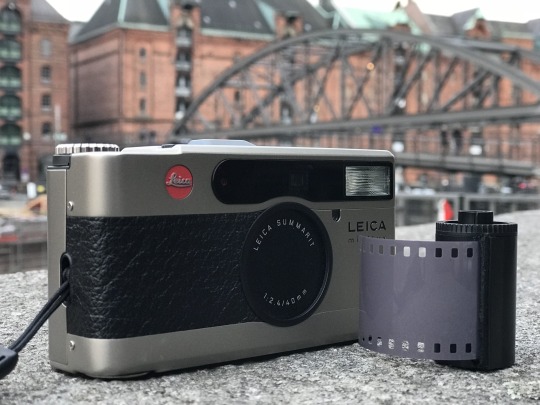
I loved taking the minilux around Hamburg, it was cold so fitted nicely in my inside pocket. For the whole trip I shot at the wrong ISO on expired film, then I developed it myself, so was lucky anything came out (notice the unlabelled, bulk rolled film canister). Also why dafuq did I take this photo of the Leica with the lens in? Idiot.
#leicaphotography#leicacommunity#leicaminilux#leica#filmcamera#film photography#35mm photography#35mm camera#35mm
1 note
·
View note